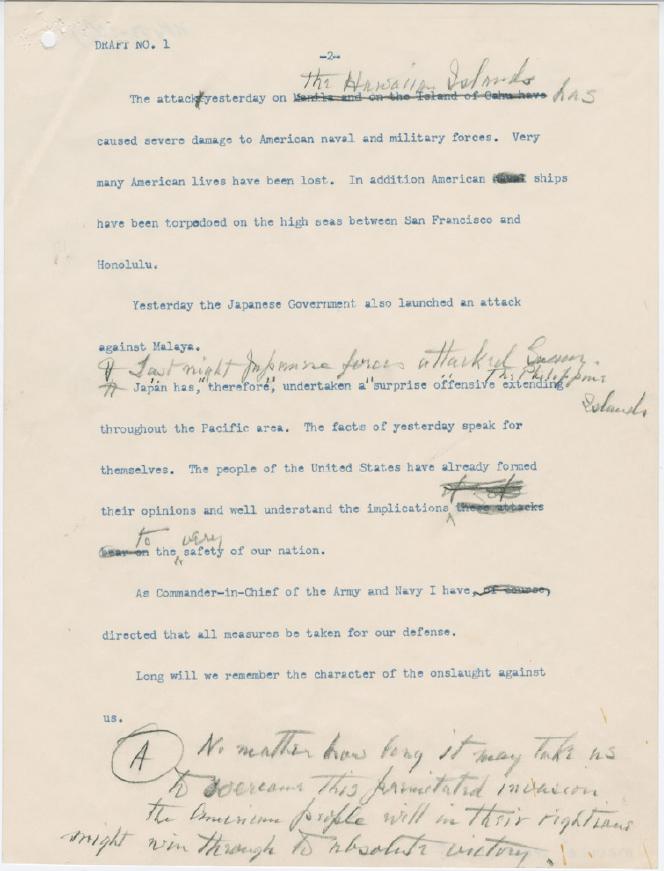

Go here to watch a video about Pearl Harbor.



Your browser does not support the audio element. Listen to a recorded reading of this page:.Take a ten question quiz about this page. The Japanese attacked on a Sunday morning because they thought the US soldiers would be less alert at that time.The entire attack lasted around 110 minutes, just under two hours.The Japanese also used submarines, including smaller ones called midget submarines, in the attack.Roosevelt has visited the USS Arizona Memorial site. President Roosevelt gave a famous speech after the attack in which he said December 7th would be a "date which will live in infamy".However, the message never got to the President. The Japanese reportedly had intended to declare war prior to the attack.The wreckage is considered a US National Historic Landmark. It is called the USS Arizona memorial and is built on the water above the wreckage of the USS Arizona. Today there is a memorial to the US soldiers who lost their lives during the attack on Pearl Harbor. Aircraft carriers would soon become the most important type of navy vessels in the war. Also, no aircraft carriers were in Pearl Harbor at the time of the attack. The Japanese had not damaged a number of important facilities on the Hawaiian Islands, including oil storage depots and repair yards. Speaker, Members of the Senate, and of the House of Representatives: Yesterday, December 7th, 1941 - a date which will live in infamy - the United States of America was suddenly and deliberately attacked by naval and air forces of the Empire of Japan. The US Navy was able to recover from the attack on Pearl Harbor fairly quickly. President Franklin Roosevelt, December 8, 1941. The United States was now a major part of World War II. Three days later Japan's allies, Germany and Italy, declared war on the United States. The next day, December 8th, 1941, the US declared war on Japan. The Japanese had hoped to break the Americans by attacking Pearl Harbor, instead they united them. They had tried to avoid the war, but they could not ignore this attack. The citizens of the United States were in shock. The result is a portrait of everyday life in America as the United States entered World War II.(information in this table from After the Attack They feature a wide diversity of opinion concerning the war and other social and political issues of the day, such as racial prejudice and labor disputes. Both collections are included in this presentation. President," was recorded in January and February 1942. A second series of interviews, called "Dear Mr. On Decem(the day after the Japanese attack on Pearl Harbor), Alan Lomax, then "assistant in charge" of the Archive of American Folk Song (now the American Folklife Center archive), sent a telegram to fieldworkers in ten different localities across the United States, asking them to collect "man-on-the-street" reactions of ordinary Americans to the bombing of Pearl Harbor and the subsequent declaration of war by the United States. "Following the Attack on Pearl Harbor presents approximately twelve hours of opinions recorded in the days and months following the bombing of Pearl Harbor from more than two hundred individuals in cities and towns across the United States.


 0 kommentar(er)
0 kommentar(er)
